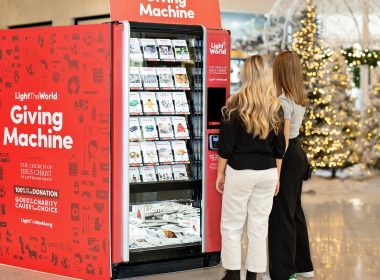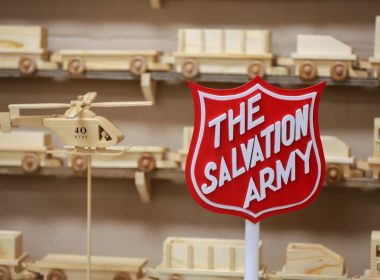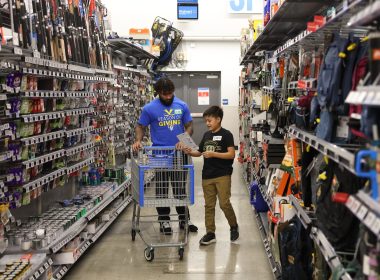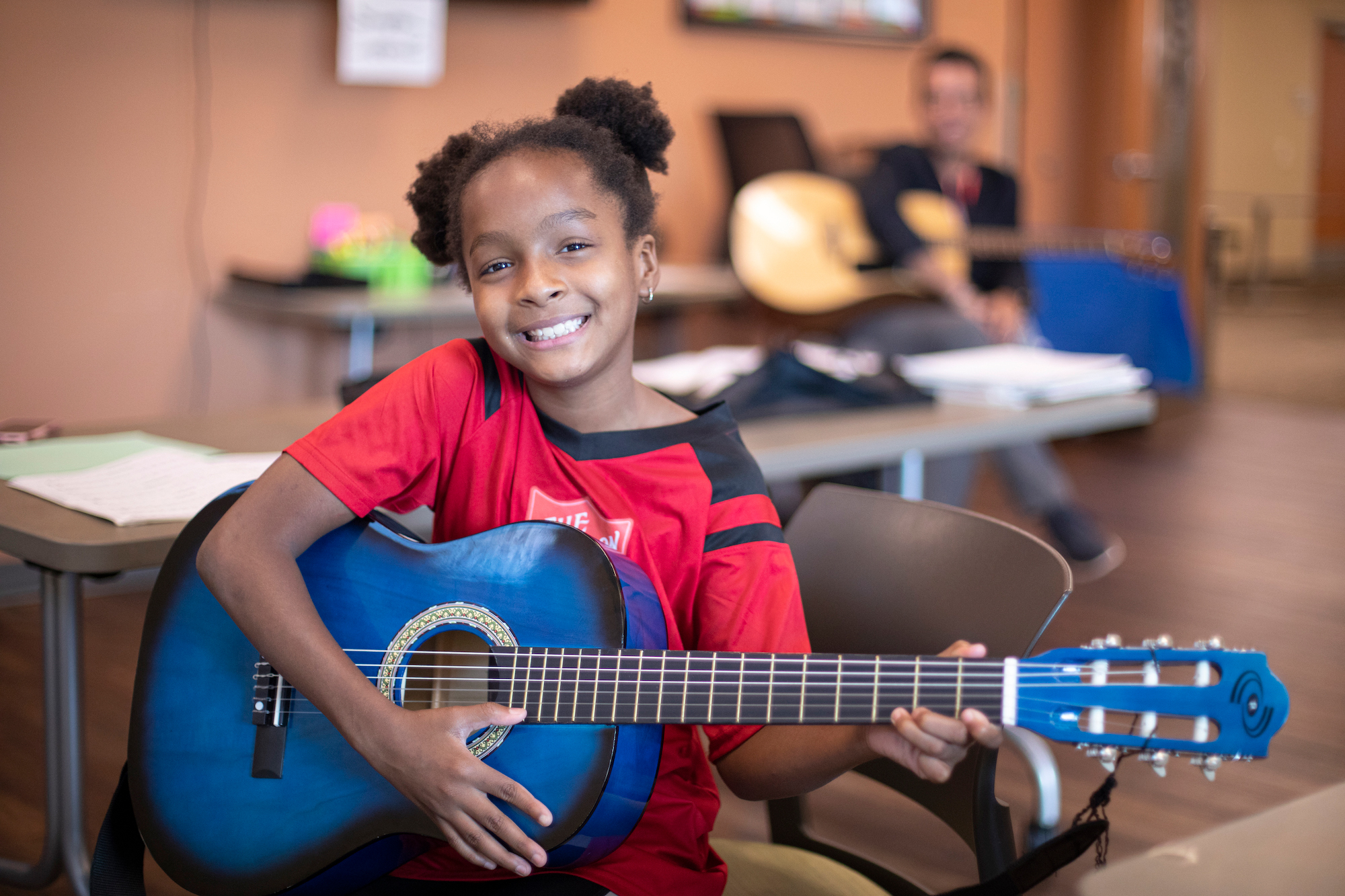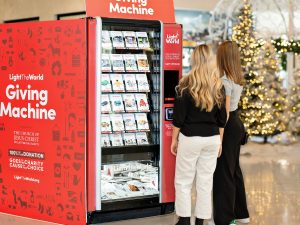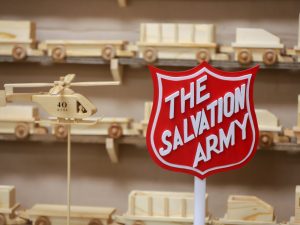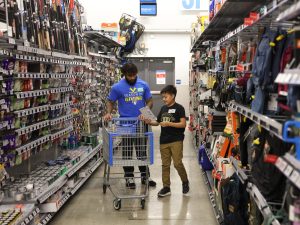Twenty years ago, the first Salvation Army Ray and Joan Kroc Corps Community Center opened in San Diego, California, realizing Joan Kroc’s dream for all people to have recreational, educational and cultural arts opportunities.
During her final visit before her death, Kroc, the widow of McDonald’s founder Ray Kroc, said “The reality of what the Kroc Center has become to San Diego is beyond my imagination.” In October 2003, she left a $1.5 billion bequest to The Salvation Army to build similar community centers around the country.
In the following years, Salvation Army units across the U.S. applied for Kroc Centers. As part of the process, locations had to show possession of property, the ability to develop matching endowment funds and community support.
The result? Twenty-six U.S. Kroc Centers—seven of which are in the Western Territory—each aiming to reach the surrounding community with the opportunities Kroc dreamed of along with the love of Jesus Christ. Every year, excluding at the height of the pandemic, about five million people visit the Kroc Centers—with up to two million of that number visiting the centers in the West.
While numbers dipped during the pandemic, the Kroc Centers kept serving, offering food and other assistance to over 10,000 people, and day care to hundreds of children of emergency medical response and healthcare workers. Some centers provided day camp to hundreds of children in communities where there were few options for parents.
Every community is different, and in the West, The Salvation Army’s Kroc Centers aim to meet the unique needs of that area, all drawing from Kroc’s vision and the Army’s mission. At any given time, there are approximately 10,000 people in the West who receive some form of scholarship (free or reduced-price programs/services) at the Kroc Centers. On any given Sunday, more than 1,000 people attend Western Territory Kroc Worship services in-person or virtually.
Here’s a look at the unique offerings at each of the Kroc Centers in the West.
Providing health education in San Diego
Ray and Joan Kroc Corps Community Center San Diego, California
Opened 2002
As the first Ray and Joan Kroc Corps Community Center, the San Diego Kroc Center paved the way for many others in the 20 years since its opening in 2002.
The center’s vision focuses on providing “opportunities that facilitate positive, life-changing experiences” whether it be through art, athletics, community service or spiritual discovery. With hundreds of classes to choose from, the center provides opportunities for everyone to get involved no matter their age, interests or abilities.
The Kroc Fit Kids program provides children from third to fifth grade with a six-month, research-based journey designed to prevent obesity. At the beginning of the program, a child’s physical health is measured, including recording one’s height and weight as well as other metrics to provide a baseline for program results.
To learn more about a child’s at-home behaviors, parents are provided with a Family Nutrition and Physical Activity (FNPA) survey before and after the program to track and calculate final results. Throughout the program, kids are provided with education on health and wellness in addition to guided physical activities to teach them how to implement healthy habits. Field trips and access to specific activities at the center are also provided monthly at no additional cost.
Through the center’s 18-week Operation Change program, Spanish-speaking community members can come together to learn about nutrition, mental health and social support. Group movement classes are included in the program and range from yoga and salsa dancing to aqua Zumba and even belly dancing. Motivational leaders help to guide and support program attendees on their journeys toward greater health.
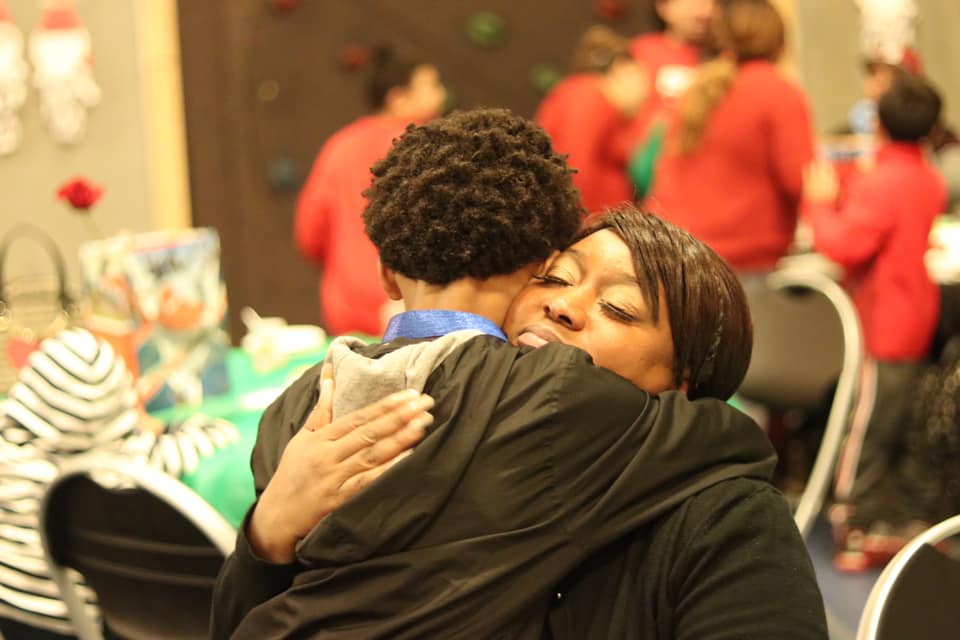
Housing the unhoused and keeping students engaged in San Francisco
Ray and Joan Kroc Corps Community Center San Francisco, California
Opened 2008
Joan Kroc’s vision became a reality in San Francisco’s Tenderloin district with the opening of the Kroc Community Center—an eight-story 135,380-square-food facility focused on educational and recreational programming as well as corps activities.
“Our Kroc Center is probably one of the most unique in that we have a 110-unit housing program, Railton Place, directly attached to our center, and we are in the heart of one of the challenging parts of the city with such a diverse community,” said Captain Craig Rodriguera, Kroc Center Corps Officer and Executive Director.
Railton Place provides housing for veterans and aged-out foster youth, along with transitional living and permanent support housing. Along with meeting the need for housing, Railton House provides job readiness training, general casework and counseling.
Rodriguera noted the Kroc Center’s Education Department, which boasts after-school and summer day camp programs. He said these programs have helped students with literacy, general education and grade advancement, along with social skills and parent and student engagement. “During COVID, we were chosen as a primary learning hub by the City to host distant learning initiatives,” he said. “After COVID, we are slowly regrowing our participants and planning for a phase two—a junior high and high school program.”
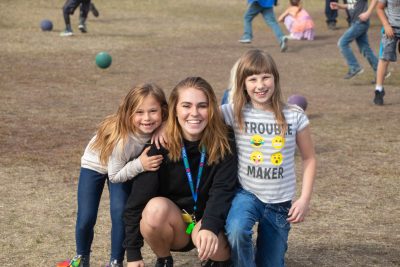
Keeping recess alive and providing wellness tools in Coeur d’Alene
Ray and Joan Kroc Corps Community Center Coeur d’Alene, Idaho
Opened 2009
The Kroc Center in Coeur d’Alene, Idaho, opened its doors with the vision to become a “safe place to belong and grow” in Kootenai County. “People can come in and better themselves in whatever capacity they need to,” said Director Kip Sharbono.
By finding unmet needs in the community, Sharbono said the center “bridges the gap” through its outreach programming, including its Mobile Kroc recess support program through which the center partners with elementary schools in the area to provide recess support at no cost.
Previously, school representatives called recess time “chaotic,” with “no consistent rules,” often leading to fights on the playground due to limited staff and resources. Currently, seven elementary schools in the district have opted into the Mobile Kroc program, impacting roughly 3,000 students.
“We have always been the most impactful when we are gap fillers,” Sharbono said. Rather than reproducing programs, Sharbono said the center looks to find “a need in the community that somebody isn’t addressing” through outreach programming.
Another ministry of the Coeur d’Alene Kroc Center is The Well, its wellness program that provides families with life skills training, access to group exercise and medical professionals at no cost. In 2021, 50 families participated in The Well.

Keeping kids in school in Salem
Ray and Joan Kroc Corps Community Center Salem, Oregon
Opened 2009
The 92,000-square-foot Salem Kroc Center opened in northeast Salem, next to an industrial park and a 22-acre city-owned nature park. The location was strategic: the center is surrounded by Oregon’s highest concentration of low-income families and some of its lowest performing schools.
The center focuses on meeting the community’s need for educational assistance, particularly for high school students. “We began a partnership with the Salem-Keizer School District,” said Captain Quinton Markham, Salem Kroc Center Corps Officer and Marion and Polk County Coordinator. “Our goal is to assist families and teens who are in danger of slipping through the cracks with their educational and career pursuits.”
The REBOUND Drop-in Program, which can accommodate up to 100 teens, offers after school drop-in resources including Wi-Fi, workspace, Chromebooks, iPads, tutoring and snacks in an environment where students can feel safe holding each other accountable toward finishing school and achieving goals. The program is free, as is the 10-week M3 REBOUND program, which explores the benefits of healthy eating, movement and mindset. Students who complete M3 receive a free fitness tracker and 12-month Kroc membership.
Thanks to a recent partnership with a local escape room company, the center now features two rooms: Escape Extinction, a race against time in a World War II enemy bunker to deprogram mind-controlled dinosaurs battling against the Allies; and KROCBUSTER, a retro throwback to the golden age of the video store, where participants must open on-time and not get fired.
“These are growing in popularity around the country,” Markham said. “They present an exciting, group-building challenge and are a ton of fun.”
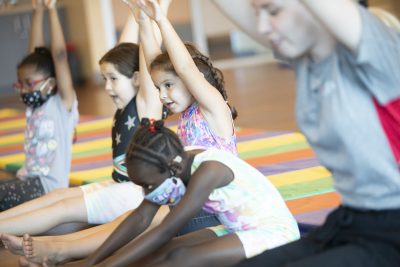
Working to close the wealth gap in Phoenix
Ray and Joan Kroc Corps Community Center Phoenix, Arizona
Opened 2012
Just five minutes from downtown Phoenix, the 147,000-square-foot Phoenix Kroc Center serves neighborhoods with the highest percentage of African Americans in the state of Arizona. Following the death of George Floyd in May 2020 and the widespread protests that followed, officials at the Kroc Center turned their attention to their own backyard.
Leaders brought in Dr. Bob Pipkin, a longtime advocate for social change in the Phoenix South Mountain community. He helped recruit about 25 community members from local government and other nonprofits to meet and devise an agenda. This task force allowed The Salvation Army to form several key partnerships and get the ball rolling. The task force also conducted a survey of the four zip codes nearest to the Kroc Center to gauge the level of financial literacy in these households.
“We found shortcomings in people’s understanding of budgeting, savings, investing, credit—kind of the basics when you look at those measures that lead to disparities in wealth,” said Ray Burden, the committee chair.
With this information in hand, Burden and Kroc Center Corps Officer Captain Caroline Rowe drew up a proposal to fund a two-phase curriculum on financial literacy, and The Salvation Army secured a $66,000 grant from T.L. Williams to fund the program for three years.
The Kroc Center’s first free 10-week “Smart Money” financial literacy class in 2021 covered the basics of managing a checking account, reducing debt, buying stocks, purchasing a home, boosting credit and other key tools to help participants manage their money.
“We’re hopeful that financial literacy and being able to help participants get information to make better decisions in financial arenas will be a worthwhile effort to reduce that [wealth] gap,” Burden said.
Reaching the greater Kapolei community in Hawaii
Ray and Joan Kroc Corps Community Center Kapolei, Hawaii
Opened 2012
In addition to the bounty of athletic and community programs at the Hawaii Kroc Center, The Salvation Army ministers to those outside the center.
Since 2019, the Hawaii Kroc Church’s Homeless Outreach Team has been walking around the Kapolei community in groups every first and third Saturday to visit neighbors who are experiencing homelessness. These individuals are often found not in encampments, but throughout the community, making foot travel essential.
The goal of the outreach, led by Kroc Church members Jeannie Chan and Sam Ng, is to provide a ministry of presence through relationship building—the regular interactions when members of the Homeless Outreach Team learn about their unhoused neighbors’ stories, needs and sometimes find ways to serve them where they are.
“I find that while they appreciate what we can offer, they actually appreciate our presence more,” said Chan, “This ministry is not a feeding program…The consistency—seeing us back, especially during this COVID period—it means a lot to them.”
Another way the Kroc Center reaches those in the community is through its Micronesian Assimilation to the Hawaiian Islands (MAHI) program, which began in 2006 before moving to the Kroc Center upon its opening in 2012. Led by Kroc Ambassador for MAHI Mesina Refilong, the program aims to provide the resources and guidance needed to help those coming from Micronesia adjust to life in the U.S.—particularly with the Form I-94, an individual’s arrival/departure record, which serves as an essential piece of documentation for life in Hawaii.
“Some of them don’t understand how important the documentation is,” Refilong said. “We came from no documentation needed. We don’t know how important it is to keep your documentation to prove, ‘Yes, this is me.’”
Over the years, the program has evolved to encompass English and computer classes to help individuals in transitioning to the area’s workforce. Through the course offerings, bonds have been formed among participants—many of whom are not originally from the same island. The result? A community.
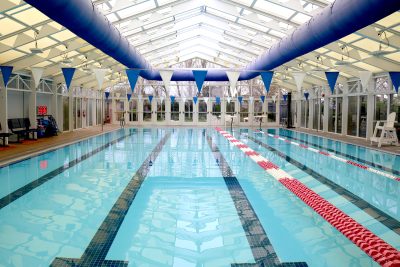
Building community in Suisun City
Ray and Joan Kroc Corps Community Center Suisun City, California
Opened 2012
The West’s final Kroc Center opened in 2012 in Suisun City, California, a bedroom community between Sacramento, California, and San Francisco. Adjacent to a public park, library and middle school, the almost 60,000-square-foot facility provides services to the greater Solano County area.
The Kroc Afterschool and Kinderkroc program supports local children. Staff members provide homework help for the older kids and help the younger ones with kindergarten concepts. Both programs run until 6:30 p.m. each weekday. Additionally, for kids ages 5–12, the center is offering Youth Basketball Camp, partnering with the Sacramento Kings.
Major Bob Louangamath, Kroc Center Corps Officer and Solano County Coordinator, said recently the center has intentionally and successfully aimed to include members from the disabled community. “Our adult Sunday school went from five to 16, which includes about six to eight of our specialized program adults,” he said.
Another outreach is a senior group, the Kroc-ettes. “With our approval and support, the Kroc-ettes created a community of fun and fellowship, and they share about our Kroc Center in the community,” Louangamath said. “They have about 20 members, and what a blessing to have had them with us.”
Do Good:
- You’ve probably seen the red kettles and thrift stores, and while we’re rightfully well known for both…The Salvation Army is so much more than red kettles and thrift stores. So who are we? What do we do? Where? Right this way for Salvation Army 101.
- Have you ever found yourself wanting to volunteer but unsure of what to do or how to go about it? Here’s the key: You can make an impact in the Fight for Good with whatever time and skills you have. Whatever your interest, there is a you-sized need for goodness in the world. Get the guide on How To Be An Impactful Volunteer with 9 habits to make a difference when giving back.
- Listen to the Do Gooders Podcast to learn more about life inside a Salvation Army Kroc Center.

